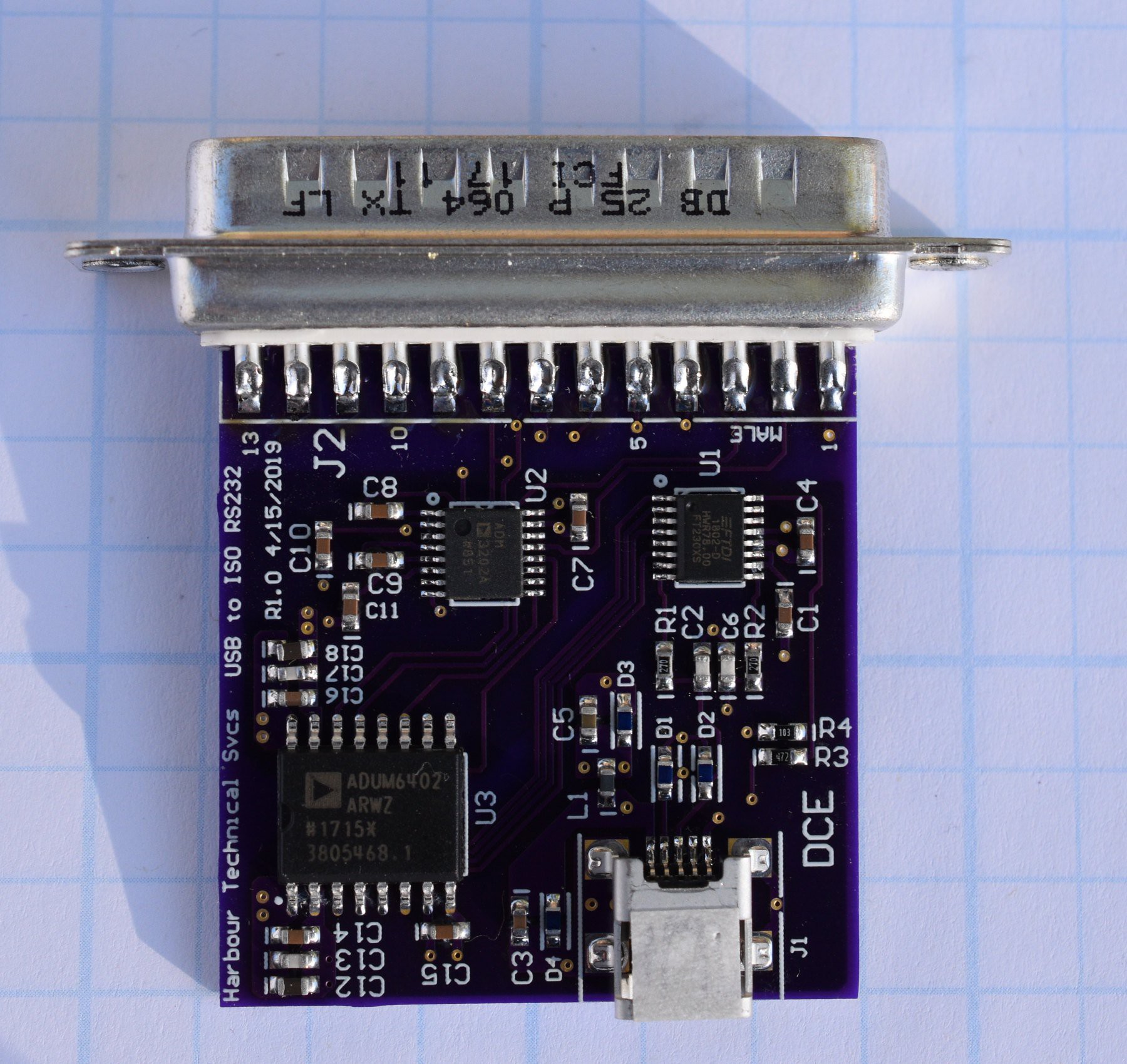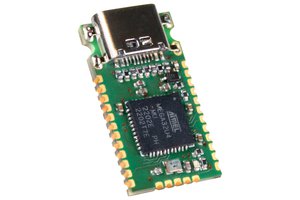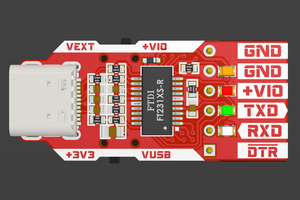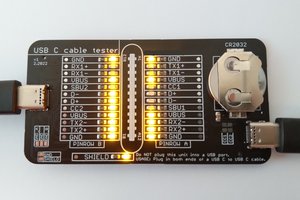These USB to RS232 adaptors are based on the FTDI FT232X USB to serial bridge chips and the Analog Devices ADM3202 RS232 level shifters.

There are numerous revisions of the RS232 standard that sets the voltage levels used for serial communication. The older versions ran as much as +/- 12V, while the newer versions run as low as +/-3V. The RS232 level shifters use capacitive voltage doublers from their input supply voltage to get the output voltage levels. Since this adaptor is intended to be used on older equipment, I wanted the output voltage to be on the high side, so I used the USB power voltage (~5V) directly to power the level shifter chip. This results in an unloaded voltage swing around +/- 10V which should talk to most old hardware. The flow control signals on old RS232 systems are kind of variable, so I included jumpers to allow setting up for the common configurations.
The FT232X USB to serial bridge chips are simple to use and have good driver support built into the Linux distributions that I use.
A 0.060" thick PCB fits between the rows of pins on the DB25 connectors, which allows putting the PCB directly in line with the connector and makes for a small module. I like the simple clam-shell cases that go on the DB25 connectors, so I machined appropriate ones from some Delrin bar stock.

One thing to note about the DB25 connectors, is that they come with a variety of mounting options. Some of the connectors shown in the pictures have nuts pressed into the clamp screw sites. Unfortunately, the pictures on the web sites don't always show the EXACT connector that you are ordering...
Through the years, I have seen bad things happen when a PC chassis ground gets involved with test equipment and something unexpected gets tied to the test equipment ground. Since my main interest in these USB to RS232 adaptors is for talking to test equipment, creating an isolated version of this adaptor seemed like a good idea. Analog Devices makes some isolator chips (ADUM6402ARWZ) that include a small power supply to support a small amount of circuitry on the isolated side. These looked ideal for creating an isolated version of this bridge. The maximum power available from the isolated supply is only a few hundred mW, but it is enough to power the RS232 level shifter chips. It turns out that the efficiency of the isolated converter chip is pretty low, in the 35% neighborhood. As a result the isolator chips run pretty warm.

The isolated USB to RS232 adaptor board is the same physical size as the original, non isolated board. As you can see from the pictures, the isolated board is a little more crowded. Because I use a lab hotplate for solder reflow, I try not to put components on the back side of the PCB. The isolated version has a few more components on the back side, but not a lot.
 Bharbour
Bharbour
 Nick Sayer
Nick Sayer
 Rasmus L.
Rasmus L.
 Mile
Mile